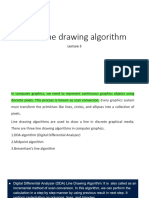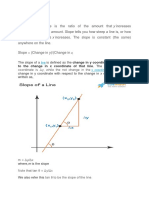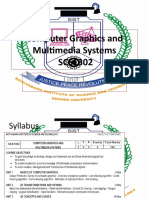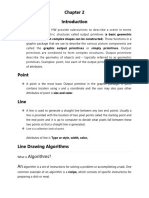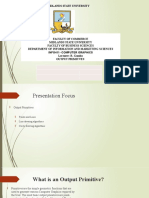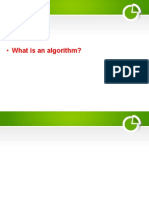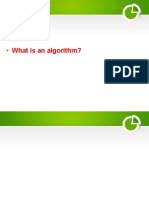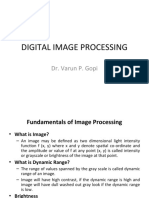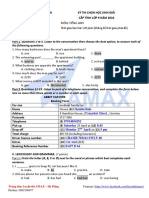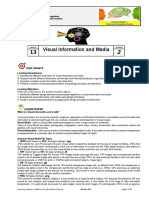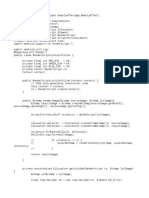0% found this document useful (0 votes)
27 views33 pagesLecture 2 - Line Drawing
The document discusses various line drawing algorithms used in computer graphical systems, including the Digital Differential Analyzer (DDA), Mid Point, and Bresenham's algorithms. Each algorithm is explained with steps for calculating intermediate points between specified endpoints, along with their advantages and drawbacks. Additionally, it includes assignments related to image formats and rasterization of other 2D primitives.
Uploaded by
ndovu7730Copyright
© © All Rights Reserved
We take content rights seriously. If you suspect this is your content, claim it here.
Available Formats
Download as PDF, TXT or read online on Scribd
0% found this document useful (0 votes)
27 views33 pagesLecture 2 - Line Drawing
The document discusses various line drawing algorithms used in computer graphical systems, including the Digital Differential Analyzer (DDA), Mid Point, and Bresenham's algorithms. Each algorithm is explained with steps for calculating intermediate points between specified endpoints, along with their advantages and drawbacks. Additionally, it includes assignments related to image formats and rasterization of other 2D primitives.
Uploaded by
ndovu7730Copyright
© © All Rights Reserved
We take content rights seriously. If you suspect this is your content, claim it here.
Available Formats
Download as PDF, TXT or read online on Scribd
/ 33







